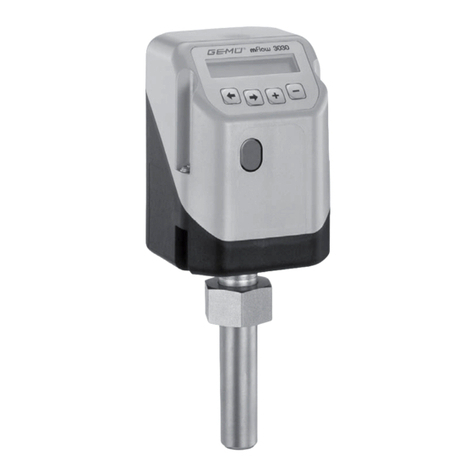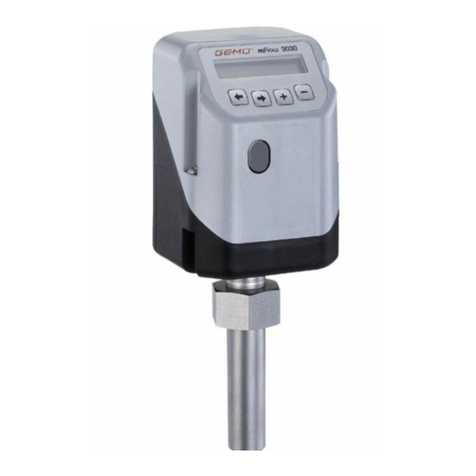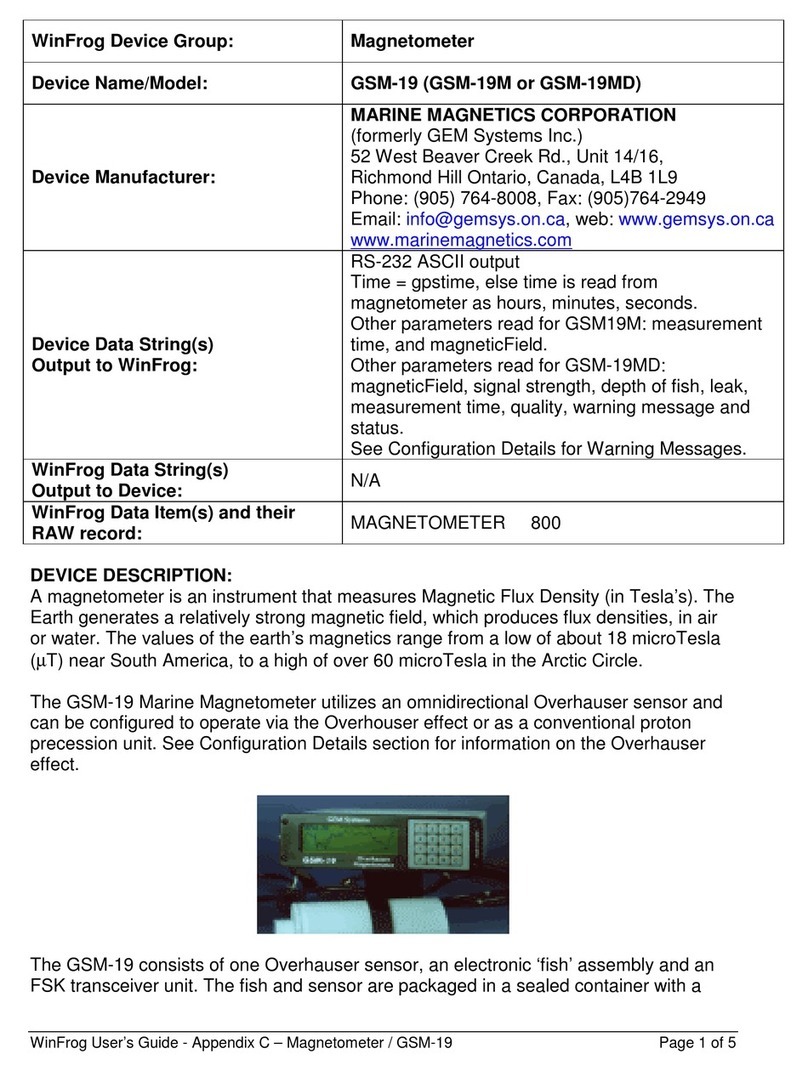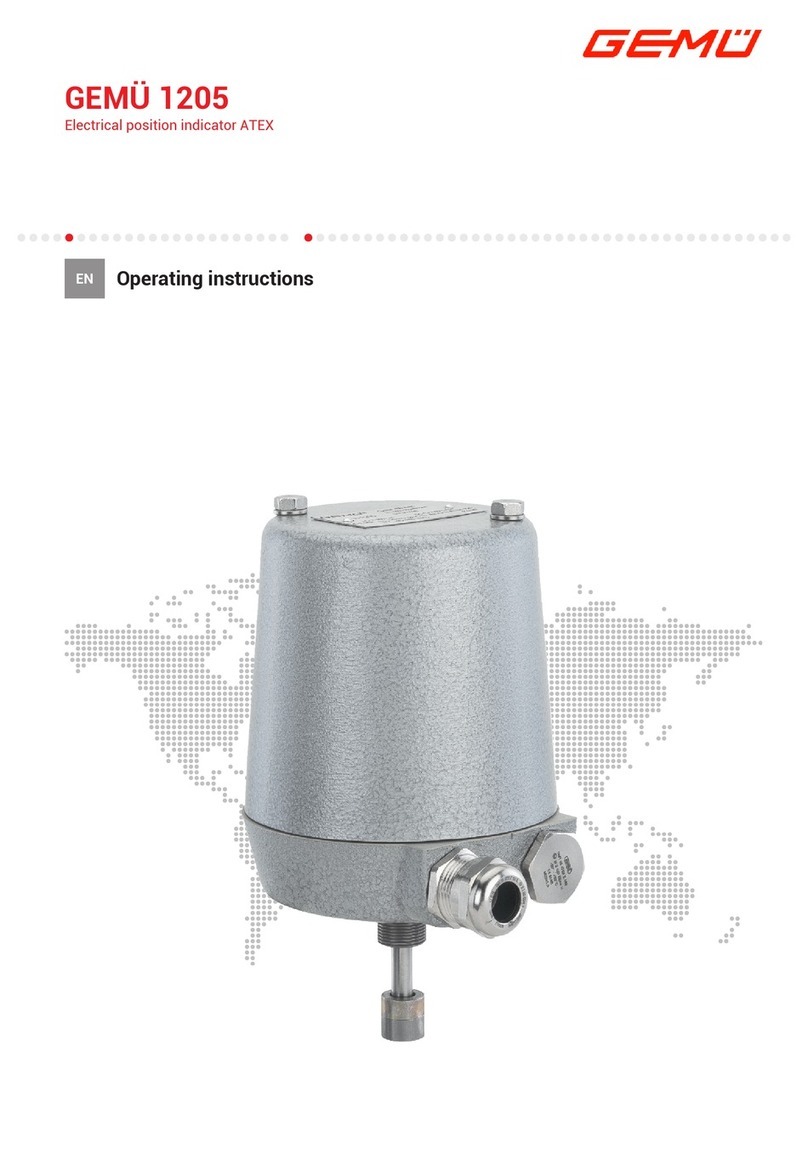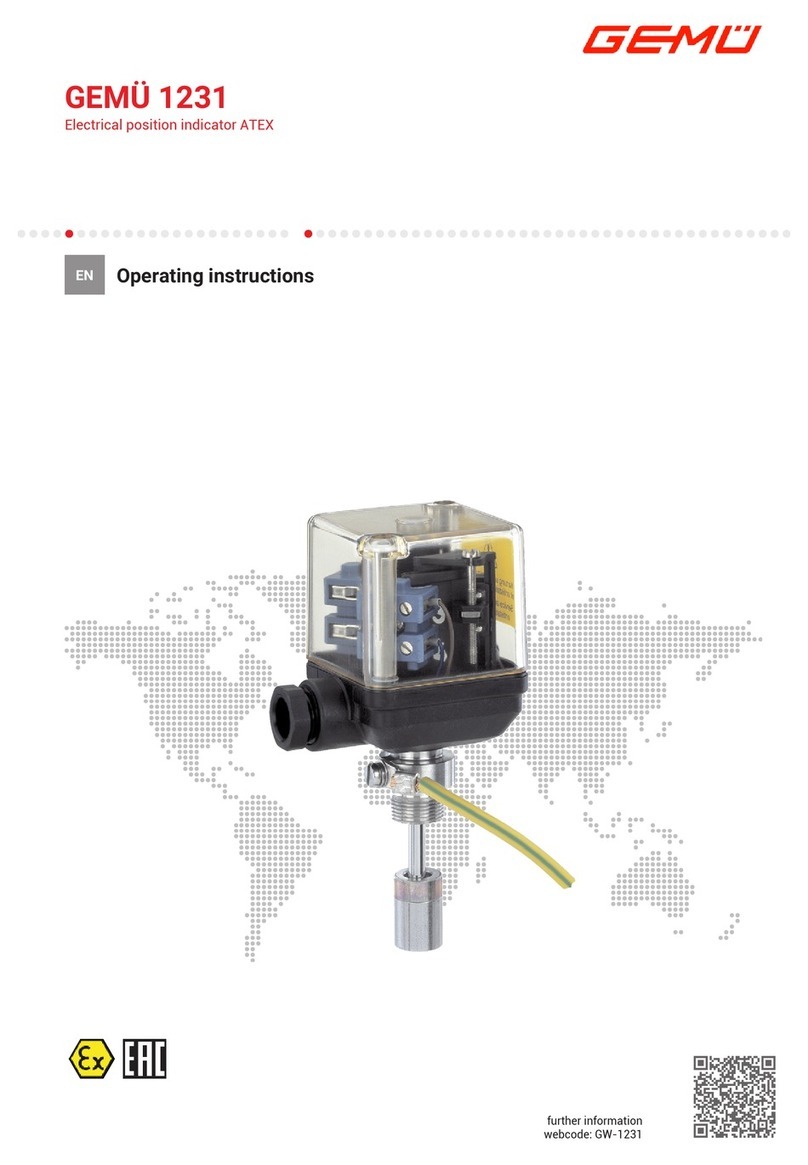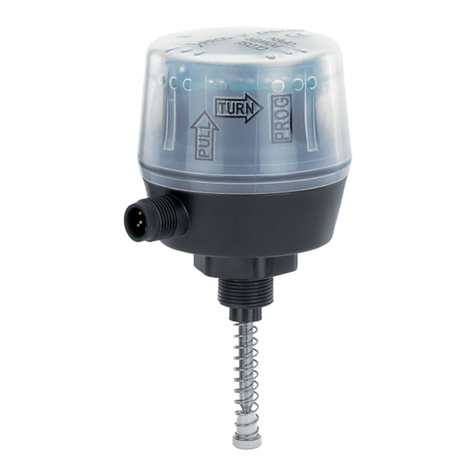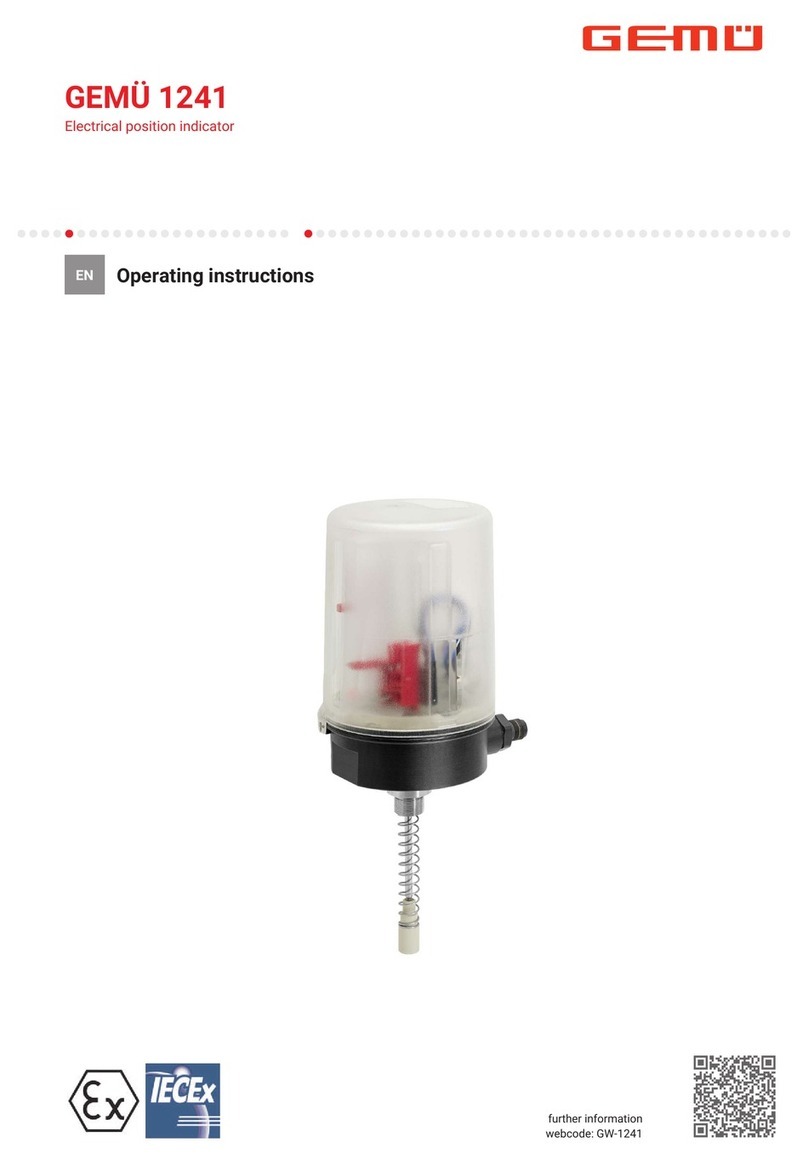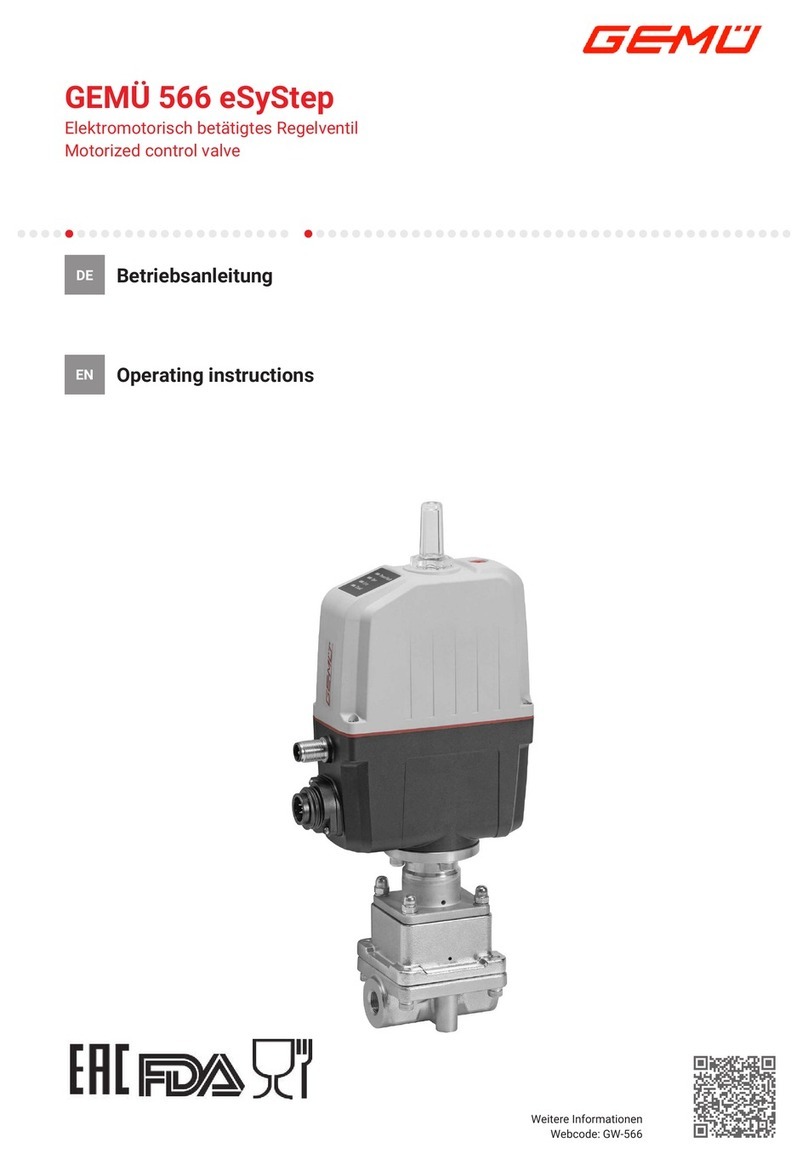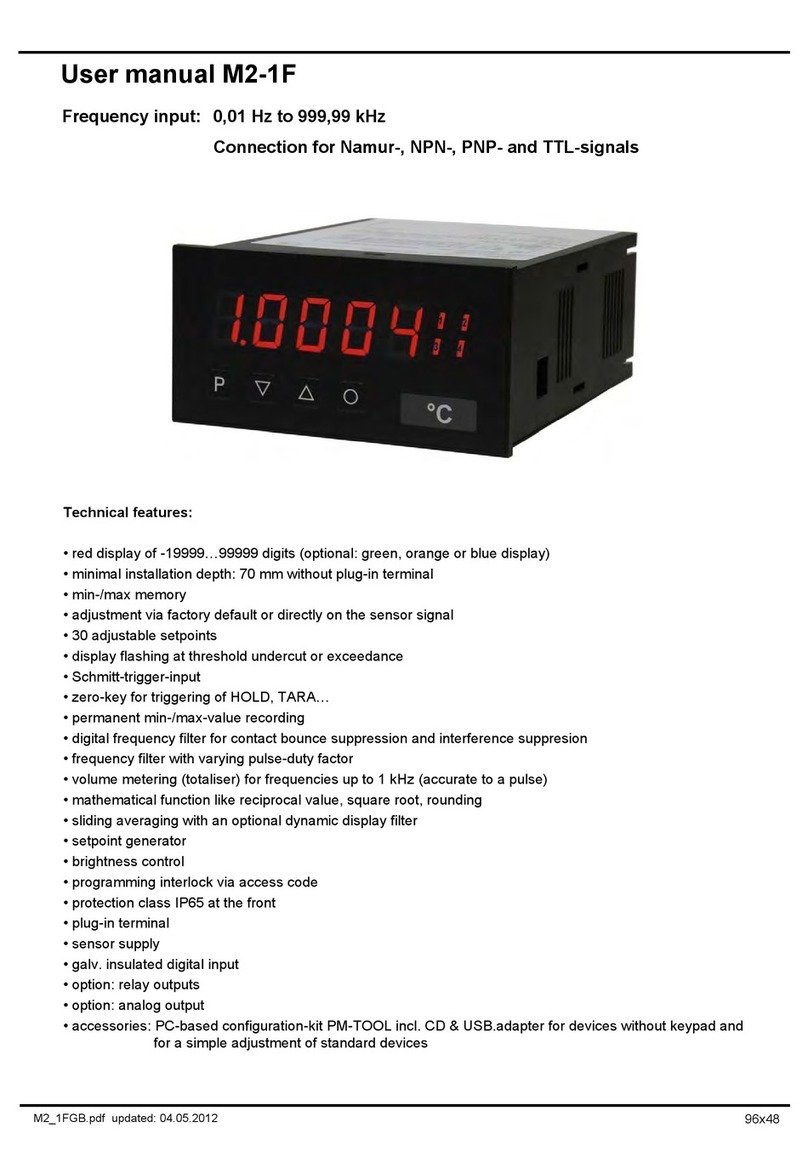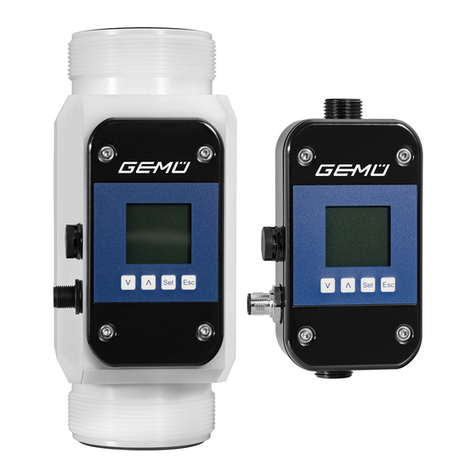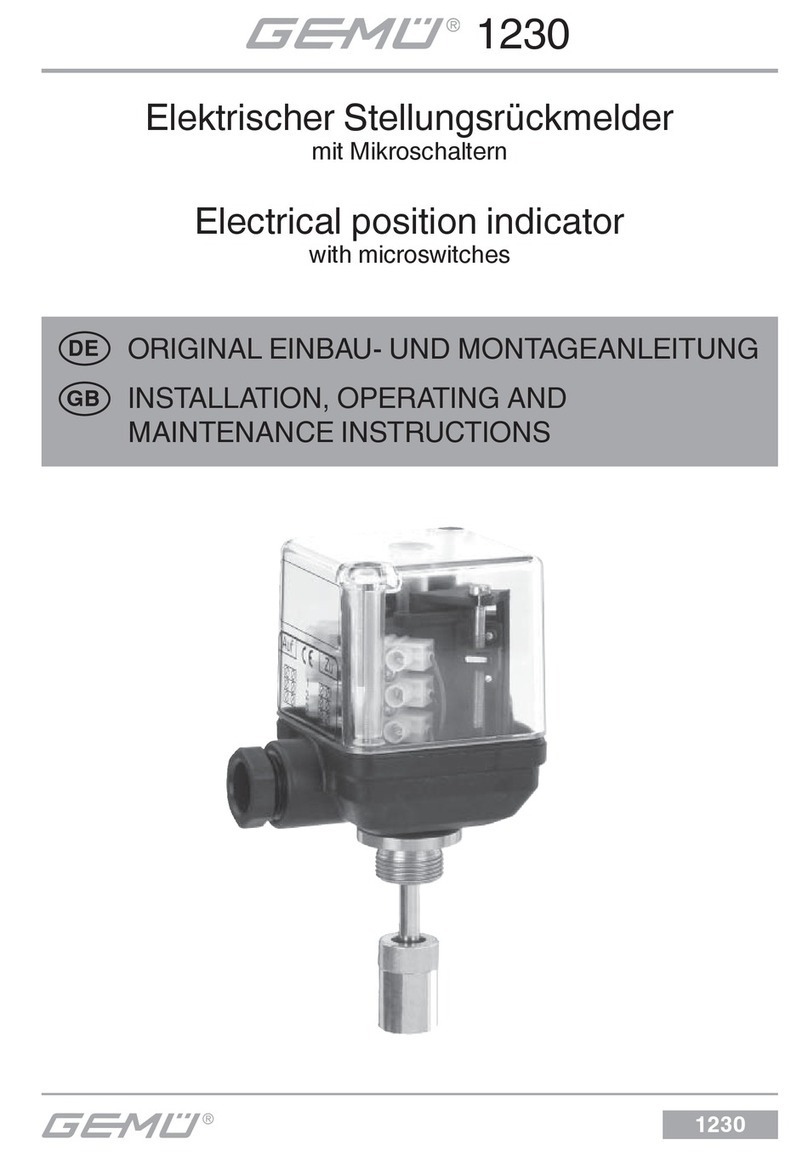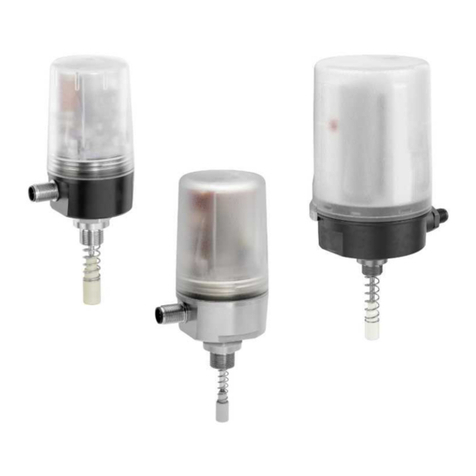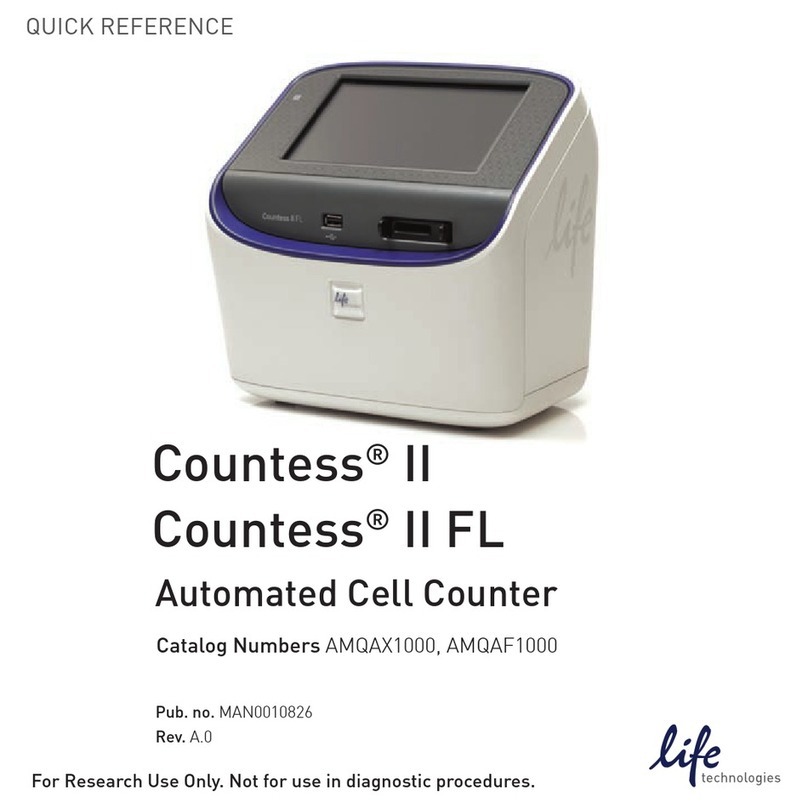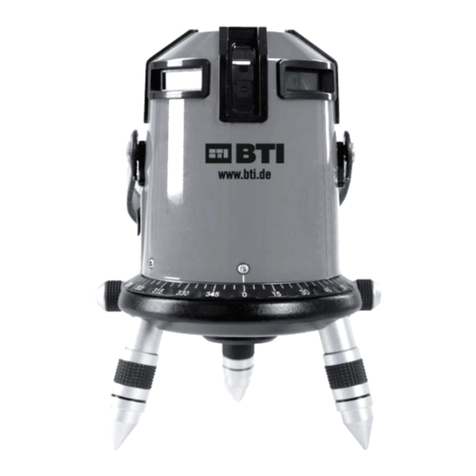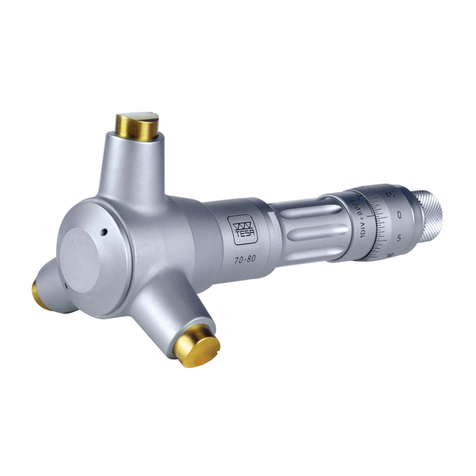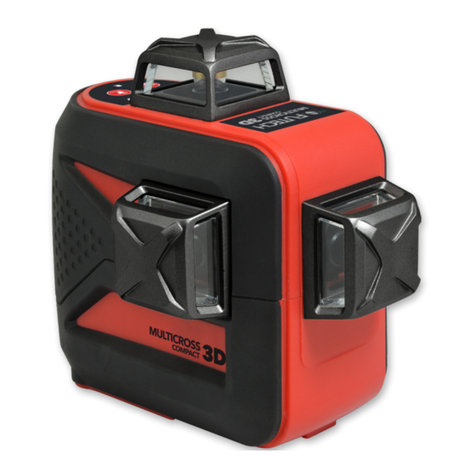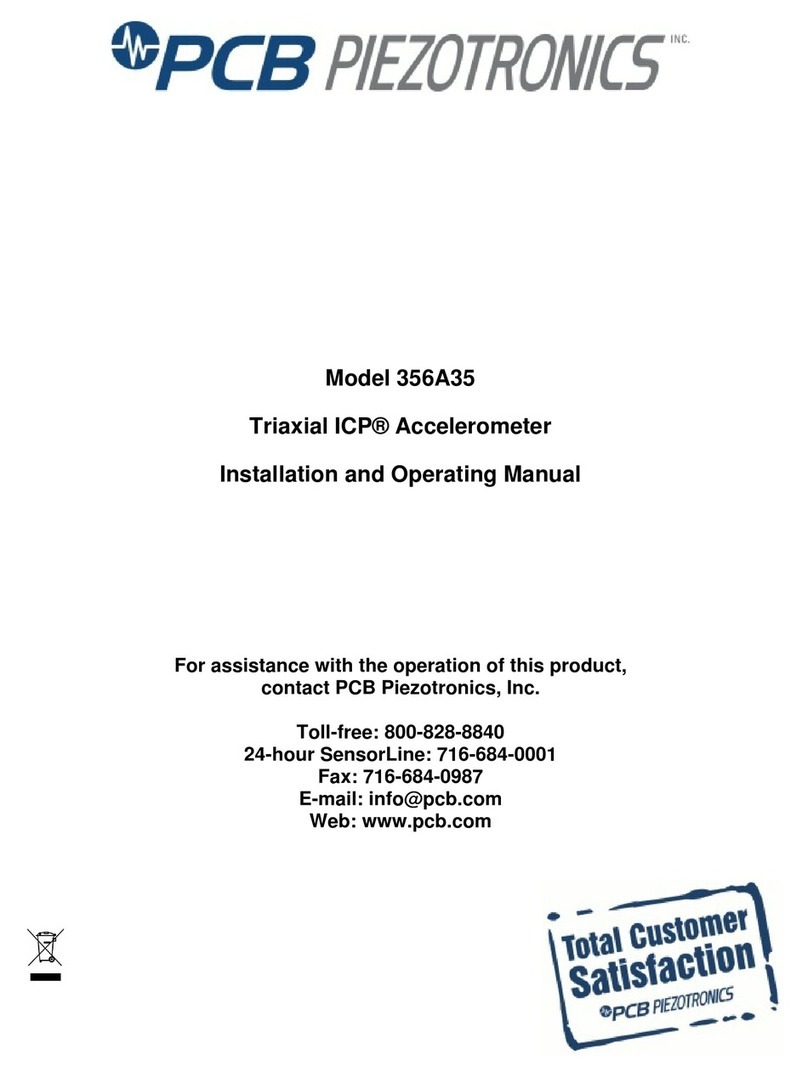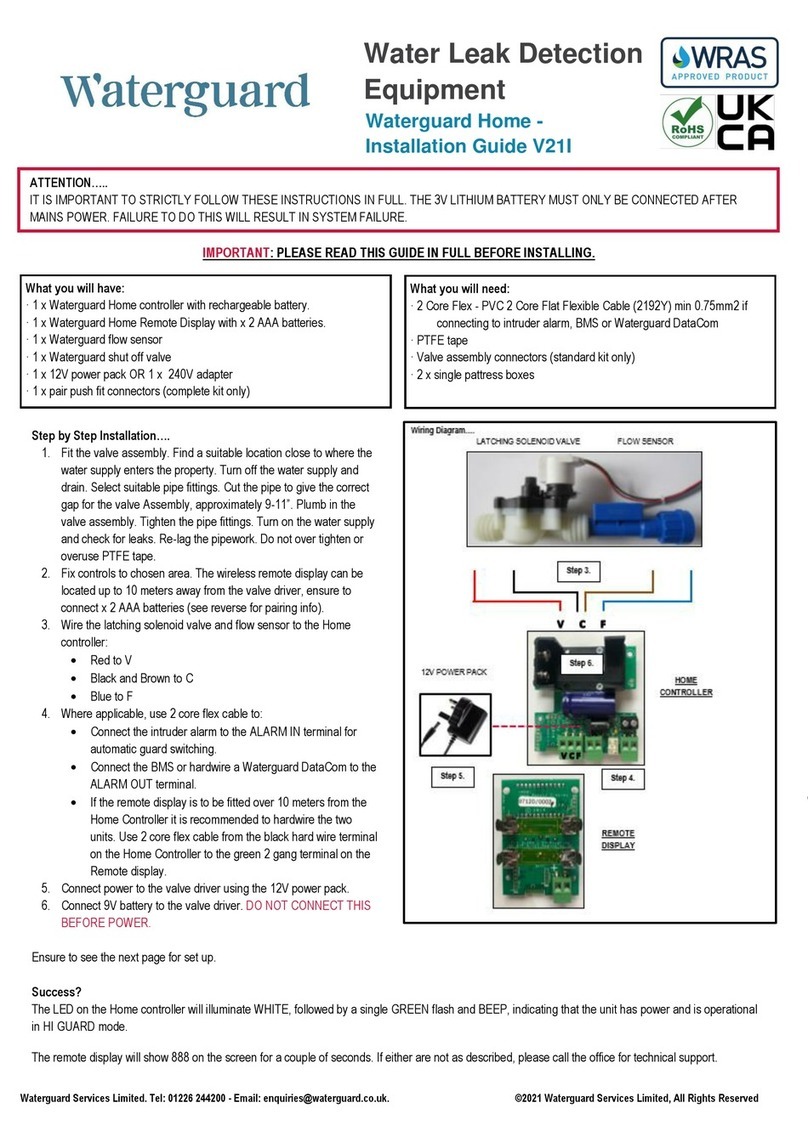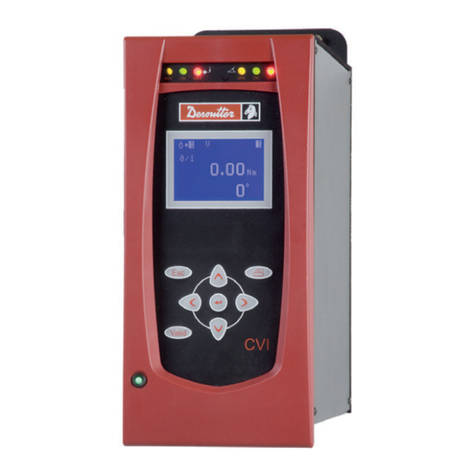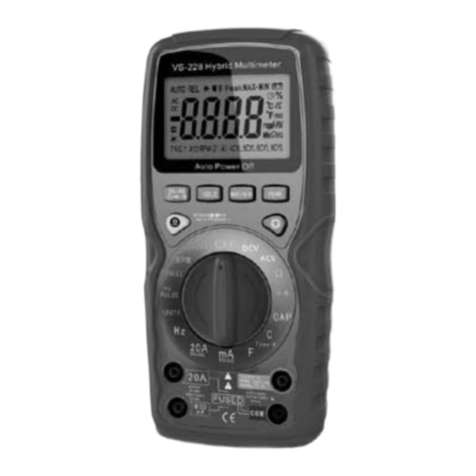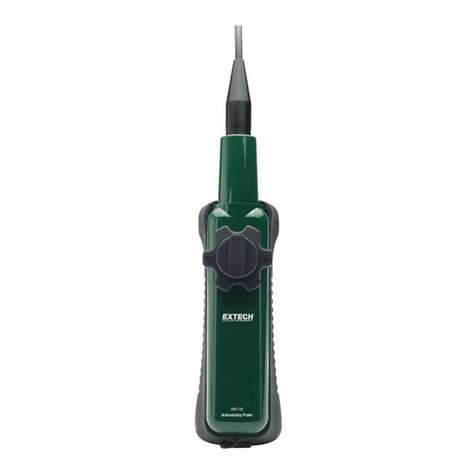GEM Hemochron 100 User manual

1 / 112
Accriva Diagnostics, Inc. - 6260 Sequence Drive, San Diego, CA 92121 USA
Tel: +1-858-263-2300 • www.instrumentationlaboratory.com
MDSS GmbH - Schigraben 41, 30175 Hannover, Germany
Operator Manual • 000HZ6006EN.US • 02 • 02/2022
English
000GH100

(This page intentionally left blank)

3 / 112
000HZ6006EN.US • 02 • GEM Hemochron 100 Operator Manual
Table of Contents
Copyright 7
Warranty 7
Preface 8
Text Conventions Used in this Manual ................................................................................8
Product Labeling, Symbols, and Icons 9
Serial Number Label ..........................................................................................................9
Symbols on Product Labeling.............................................................................................9
Icons on the Display Screen.............................................................................................10
Symbols Used in this Manual ...........................................................................................11
Denitions and Terms 12
1 Introduction 13
1.1 Intended Use ..........................................................................................................13
1.2 UserProciency .....................................................................................................13
1.3 Summary and Explanation......................................................................................13
1.4 Principles of Operation ...........................................................................................14
1.5 Description of the System.......................................................................................15
1.5.1 Instrument Components .....................................................................................15
1.5.2 Test Cartridges ...................................................................................................16
1.5.3 CentralizedCongurationManager(CCM)Software............................................16
1.5.4 LiquidQualityControl(LQC)ProductforanLQCTest...........................................16
1.6 Operational Warnings and Precautions....................................................................17
1.7 Limitations .............................................................................................................18
1.8 Specications.........................................................................................................18
2 Preparing the Instrument 19
2.1 Packaging and Other Materials...............................................................................19
2.2 InstrumentPowerandCharging .............................................................................20
2.2.1 Battery Information.............................................................................................20
2.2.2 Charging the Battery ..........................................................................................20
2.2.3 PowerOntheInstrument....................................................................................21
2.2.4 PowerOfftheInstrument....................................................................................21
2.2.5 Sleep Mode ........................................................................................................21
2.2.6 AutomaticShutdown ..........................................................................................21
2.3 Display Screen .......................................................................................................22
2.3.1 Selecting Items on the Screen ............................................................................22
2.3.2 Scrolling the Screen ...........................................................................................22
2.3.3 Back and Home Icons.........................................................................................22

4 / 112
000HZ6006EN.US • 02 • GEM Hemochron 100 Operator Manual
2.4 Entering Information into the Instrument.................................................................23
2.4.1 Using the Virtual Keyboard..................................................................................23
2.4.2 Using the Barcode Scanner ................................................................................24
Δ 3 Instrument Settings 25
3.1 Instrument Accounts...............................................................................................25
Δ3.2 UserSettings(BasicSettings).................................................................................25
3.2.1 Rotate Screen.....................................................................................................25
3.2.2 Interval Timer .....................................................................................................27
3.2.3 Adjust the Display Brightness .............................................................................27
3.2.4 Adjust the Beep Volume......................................................................................28
3.2.5 ViewSystemInformation....................................................................................28
3.2.6 Adjust the Font Size............................................................................................28
Δ3.3 SupervisorSettings(AdvancedSettings).................................................................29
3.3.1 Reset Counters...................................................................................................31
Δ3.3.2 AddInstrumentName.........................................................................................31
3.3.3 Set the Sleep Mode Interval................................................................................31
3.3.4 SettheShutdownInterval ..................................................................................32
3.3.5 Set the Date and Time ........................................................................................32
3.3.6 ViewBatteryUsageInformationBasedonSystemResource...............................33
3.3.7 Connectivity Settings..........................................................................................33
3.3.8 Language ...........................................................................................................37
3.3.9 ViewInstrumentInformation...............................................................................37
3.3.10 CongureaPOCT1‑ANetwork............................................................................37
3.3.11 Set Port Number and Encryption Mode for CCM..................................................38
3.3.12 AutomaticallySendTestResultstotheNetwork(AutoSend)...............................39
3.3.13 OperatorID(OID)Settings...................................................................................39
3.3.13.1 Require Operators to Enter Their OID and Specify the Method ......................39
3.3.13.2 ReuseanOID(AutomaticEntryoftheMostRecentOID) ...............................40
3.3.14 PatientID(PID)Settings......................................................................................41
3.3.14.1 Require Operators to Enter a PID and Specify the Method.............................41
3.3.14.2 ReuseaPID(AutomaticEntryoftheMostRecentPID)..................................41
3.3.15 Clear Test Results...............................................................................................42
3.3.16 Test the Barcode Scanner...................................................................................43
3.4 Run a Demo Test ....................................................................................................44
3.5 Wi‑FiSignalStrength..............................................................................................45
4 Patient Testing 46
4.1 Considerations About Patient Testing ......................................................................46
4.2 Specimen Collection...............................................................................................46
4.3 Run a Patient Test...................................................................................................47
4.4 Patient Test Results Data ........................................................................................49
4.5 TestIntervalTimerFeature(Optional)......................................................................49

4 / 112
000HZ6006EN.US • 02 • GEM Hemochron 100 Operator Manual
5 / 112
000HZ6006EN.US • 02 • GEM Hemochron 100 Operator Manual
5 Quality Control(QC) 51
5.1 ElectronicQualityControl(EQC)Testing ..................................................................52
5.2 LiquidQualityControl(LQC)Testing ........................................................................53
5.3 QCLockout ............................................................................................................53
5.3.1 Patient Test Lockout ...........................................................................................54
5.3.2 QCTestLockout .................................................................................................54
5.3.3 Clearing a Lockout .............................................................................................55
5.4 RunanEQCTest.....................................................................................................57
5.5 RunanLQCTest.....................................................................................................59
6 Database 63
6.1 Introduction............................................................................................................63
6.2 View/SendTestResults ..........................................................................................64
7 Service, Maintenance, and Troubleshooting 65
7.1 Routine Maintenance..............................................................................................65
7.2 Instrument Repair...................................................................................................65
7.3 Troubleshooting......................................................................................................65
7.3.1 Cannot Connect to Instruments...........................................................................65
7.3.2 Error Messages ..................................................................................................66
7.3.3 Changes in Performance Characteristics.............................................................69
7.4 Disposing of Products.............................................................................................70
7.4.1 Disposingand/orReplacingaBattery .................................................................70
7.4.2 Disposing of an Instrument.................................................................................70
7.4.3 Disposal of Other Materials.................................................................................70
Δ 8 Centralized Conguration Manager(CCM) Software 71
8.1 CCM Introduction....................................................................................................71
8.1.1 GEM Hemochron 100 System User Accounts ......................................................71
8.1.2 OverviewforUsingCCMSoftware ......................................................................72
8.2 Installing,Updating,andUninstallingCCMSoftware ...............................................73
8.2.1 InstallCCMSoftwareandCongureFirewalls.....................................................73
8.2.2 UpdateCCMSoftware ........................................................................................73
8.2.3 UninstallCCMSoftware......................................................................................74
8.3 Administrative Settings...........................................................................................74
8.3.1 Logging into CCM for the First Time....................................................................75
8.3.2 Create CCM User Accounts.................................................................................76
8.3.3 CongureCCMSoftwareSettings.......................................................................77
8.3.3.1 CongureMiscellaneousSettings.................................................................77
8.3.3.2 CongureNetworkSettings..........................................................................77

6 / 112
000HZ6006EN.US • 02 • GEM Hemochron 100 Operator Manual
Δ8.4 CongurationSettings ............................................................................................78
8.4.1 Add Instruments and Instrument Groups.............................................................78
8.4.1.1 Add an Instrument .......................................................................................79
8.4.1.2 CreateanInstrumentGroup(Optional) .........................................................79
Δ8.4.2 CongureInstruments ........................................................................................80
Δ8.4.2.1 CreateCongurationData ............................................................................81
8.4.2.1.1 CongureCartridgeLotsData ...................................................81
8.4.2.1.2 CongureLQCLotsData ...........................................................82
Δ8.4.2.1.3 CongureInstruments(InstrumentSettings)..............................83
8.4.2.1.4 Create Instrument Operators and Supervisors ...........................93
8.4.2.1.5 CongureInstitutionData..........................................................94
Δ8.4.2.2 SendCongurationDatatoInstruments .......................................................95
8.4.2.3 ExportCongurationData ............................................................................96
8.4.2.4 ImportCongurationData ............................................................................96
8.4.3 GenerateaCongurationReport.........................................................................97
8.4.4 Log Files ............................................................................................................97
8.4.4.1 Audit Log File...............................................................................................97
8.4.4.2 Debug Log File.............................................................................................97
8.4.5 UpdateInstrumentSoftware ...............................................................................98
8.4.6 UpdateWi‑FiEnterpriseCerticate .....................................................................98
8.4.7 DownloadInstrumentLogFiles.........................................................................100
9 Regulatory Compliance 101
10 Legal Notices and Licenses 105
Ordering Information 106
Technical Support 106
Trademarks 106
Index 107
= Change Identier: Change(s) to section since previous revision.

6 / 112
000HZ6006EN.US • 02 • GEM Hemochron 100 Operator Manual
7 / 112
000HZ6006EN.US • 02 • GEM Hemochron 100 Operator Manual
Copyright
© 2022. This document is the copyright of the manufacturer and must not be copied or reproduced in any form
without prior consent. The manufacturer reserves the right to make technical improvements to this equipment and
documentation without prior notice as part of a continuous program of product development.
Warranty
The manufacturer declares to the original purchaser that each GEM® Hemochron™ 100 system manufactured and
sold by the manufacturer or sold by an authorized distributor shall be free from defects in material and workmanship
and, under normal and proper use conditions, warrants it for a period of 1 year from installation and no more than
13 months from the shipping date, except as otherwise provided in writing.
The manufacturer’s obligation is limited to repairing, replacing, or modifying (at the manufacturer’s undisputed
judgment) at the manufacturer’s factory, or elsewhere as designated by the manufacturer, the material whose defects
have been veried, on condition that the purchaser has informed the manufacturer of any defects found within
10 days from receipt, or 10 days of discovery in case of defects which may not be identied in the normal inspection.
Damages caused by or connected to transport are excluded.
Transport to a manufacturer facility or authorized distributor will be at purchaser’s charge and risk. Replacements,
repairs, or alterations will in no case determine extension to the warranty period.
The warranty does not cover those parts which deteriorate or which are in any case considered consumables or those
parts or “items” which by their nature are normally required to be replaced periodically consistent with normal
maintenance. It is also understood that following the purchase and delivery of the instrument, the purchaser shall be
deemed liable for any losses, damages, or complaints concerning persons or things incurred by the use or misuse of
the instrument on behalf of the purchaser, its employees, co-operators, or others.
The manufacturer does not assume any obligation or warranty engagement concerning precision and/or accuracy of
the measurements as well as for any damage to the instrument directly or indirectly resulting from the use of reagents
and/or consumables dierent from those produced by the manufacturer specically for its own instruments and for the
same properly tested.
Warranty will not apply to those defective instruments or materials showing defects or damage arising from the
following causes:
1 Insucient or negligent care by the purchaser.
2 Insucient or negligent maintenance by the purchaser in relation to the instructions contained in the manuals
prepared by the manufacturer for this purpose; tampering or alterations of the instruments or in any case
interventions or repairs made by any person not duly authorized by the manufacturer.
3 Misuse due to carelessness, negligence, or inexperience.
4 Employment of materials under heavier conditions than those for which they have been designed and
manufactured and use of the same in combination with incompatible or dangerous products.
5 Non-observance of the regulations relevant to installation, power supply, and operation of the instruments.

8 / 112
000HZ6006EN.US • 02 • GEM Hemochron 100 Operator Manual
Preface
Text Conventions Used in this Manual
This manual uses the text conventions specied below:
Numbered Paragraphs for Procedures:
1 Connect the power supply AC cable to an electrical service outlet.
2 Connect the power supply DC cable to the instrument.
Bold Text:
User interface controls, such as the names of menu items and eld labels, are in bold.
Example:
1 Select (Settings) > Supervisor Settings > OID Entry Preference.
Some words other than those that are used on user interface controls are also in bold. These words act as inline
headings in bulleted lists.
Example:
●Add a user note –
Operators
can add a user note to the test result.
Italic Text:
When a procedure species that the user needs to enter text into a eld, that text is shown in
italic
:
Example:
Enter
000
and select Done.
Cross-references to other information are in
italic
:
Example:
See
“Patient Testing” (page 46)
.
Paragraphs containing important information are in
italic
:
Example:
NOTE: Supervisors have access to User Settings and Supervisor Settings.

8 / 112
000HZ6006EN.US • 02 • GEM Hemochron 100 Operator Manual
9 / 112
000HZ6006EN.US • 02 • GEM Hemochron 100 Operator Manual
Product Labeling, Symbols, and Icons
Before the instrument is operated, it is essential that all product labeling is read and understood. Product labeling
includes any instructions, labels, and packaging accompanying the instrument, test cartridges, and LQC products.
Serial Number Label
The serial number label on the bottom of the instrument contains important textual information and symbols (
Figure 1
).
For a list of these symbols and their meaning, see
“Symbols on Product Labeling”
.
Figure 1
: Instrument Serial Number Label
Symbols on Product Labeling
Symbol Description Symbol Description
Consult Instructions for Use Fragile, Handle with Care
Caution This Way Up
Do Not Reuse Keep Dry
Catalog Number Direct Current (DC)
Serial Number Power Button (ON/OFF)
Lot Number Ethernet
Quantity Barcode Scanner
Use-By Date Electronic Equipment: Dispose of Properly
Temperature Limit Date of Manufacture
Contains Sucient for <n> Tests Professional Use, Prescription Only
Quality Control – Level 1 (Normal)
In vitro
Diagnostic Medical Device
Quality Control – Level 2 (Abnormal) Conformity to European Directives/Regulations
Biological Risks Authorized Representative in the European
Community
Not Made with Natural Rubber Latex Manufacturer
Device for Near-Patient Testing TÜV

10 / 112
000HZ6006EN.US • 02 • GEM Hemochron 100 Operator Manual
Icons on the Display Screen
Home Screen Icons:
Icon Description
Patient Test – Select icon to test a patient
sample. See
“Patient Testing” (page 46)
.
Quality Control – Select icon to run QC tests to
ensure the system is operating properly. See
“Quality Control (QC)” (page 51)
.
Database – Select icon to view saved test
results. See
“Database” (page 63)
.
Settings – Select icon to view or congure the
Instrument Settings. See
“Instrument Settings”
(page 25)
.
To congure more advanced settings on 1 or
more instruments at the same time, see
“Centralized Conguration Manager (CCM)
Software” (page 71)
.
Basic Navigation Icons:
Icon Description
Back – Select icon to return to the previous
screen.
Home – Select icon to display the Home screen.
Battery Power Icons:
Icon Description
Battery is fully discharged.
Battery is low.
Battery is partially charged.
Battery is fully charged and 100% is displayed.
NOTE: Flash symbol will appear on battery icon
when power supply is connected.
Connectivity Icons:
Icon Description
Ethernet – The instrument is connected to the
network through an Ethernet cable.
Wi-Fi is Disconnected – The instrument was
wirelessly connected to the network but is now
disconnected.
Wi-Fi Connection is Poor.
Wi-Fi Connection is Fair.
Wi-Fi Connection is Good.
Wi-Fi Connection is Excellent.
Network connection is active.
Network connection is inactive, previous
connection was successful.
Icon Description
Network connection is inactive, previous
connection failed.
Test Result Transmission In Process – Test
results are being sent to the network.
Test Result Transmission Sent – Test results
were successfully sent to the network.
Test Result Transmission Failed – Test results
were not sent to the network.
Test‑Related Icons:
Icon Description
Testing is allowed (EQC/LQC testing has
passed):
• For EQC – A patient or LQC test can be run.
• For LQC – A patient test can be run.
Testing is not allowed (EQC/LQC testing has
failed):
• For EQC – Before a patient or LQC test can
be run, a successful EQC test must be run.
• For LQC – Before a patient test can be run, a
successful LQC test must be run.
EQC/LQC Interval has expired.
Warning Message – For a list of possible
warning messages, see
Table 10 (page 66)
.
Start Test – Select icon to start or run a test.
Abort Test – Select icon to abort or cancel the
test at any time.
New Test – Select icon to start a new patient
test.
User Note – Select icon to enter a user note for
a test result.
Result Details – Select icon to view detailed
information about a test result.
Information – Select icon to view details of the
current test result.
Insert Test Cartridge – The instrument prompts
the
Operator
to insert a test cartridge.
Remove Test Cartridge – The instrument
prompts the
Operator
to remove the test
cartridge.
Warming Test Cartridge – The instrument is
warming the test cartridge.
Apply Sample to Test Cartridge – The
instrument prompts the
Operator
to apply the
sample to the test cartridge.
Sample in Test Channel – The instrument is
drawing the sample into the test channel.
Checking Test Cartridge.

10 / 112
000HZ6006EN.US • 02 • GEM Hemochron 100 Operator Manual
11 / 112
000HZ6006EN.US • 02 • GEM Hemochron 100 Operator Manual
Symbols Used in this Manual
Particular attention should be given to paragraphs marked CAUTION, WARNING, BIOHAZARD, and NOTE. These
paragraphs contain important information.
Symbol Meaning
CAUTION: A potential hazard that could cause minor personal injury or minor damage to the product or
property.
WARNING: A potential hazard that could cause serious personal injury, and/or damage to equipment.
BIOHAZARD: This symbol alerts the user of potential biological risks associated with the medical device.
NOTE: A note is supplementary information.
Change Indicator: Change(s) to section since previous revision.

12 / 112
000HZ6006EN.US • 02 • GEM Hemochron 100 Operator Manual
Denitions and Terms
The following acronyms and abbreviations are used in this manual and on instrument screens:
Term Denition
AC Alternating Current
ACT Activated Clotting Time
ACT-LR Low Range Activated Clotting Time
CCM Centralized Conguration Manager
CCM Accounts Describes a user permission level for CCM software.
CCM Administrator Can create, edit, and delete accounts for other
Admins
and
CCM Supervisors
.
CCM Supervisor Can congure the list of instruments on the PC, and change settings of the instruments
through the PC.
DB Database
DC Direct Current
DHCP Dynamic Host Conguration Protocol
DNS Domain Name Server
EQC Electronic Quality Control
ESV Electronic System Verication
Instrument Accounts Describes a user permission level for instrument software.
Instrument Operator Can operate the instrument and use the instrument menu to change basic settings.
Instrument Supervisor Can operate the instrument and use the instrument menu to change basic and advanced
settings.
LAN Local Area Network
LIS Laboratory Information System
Li-ion Lithium-ion
LQC Liquid Quality Control
MAC Address Media Access Control Address
OID Operator Identication (Operator ID)
PC Personal Computer
PID Patient Identication (Patient ID)
POCT1-A Point Of Care Connectivity approved standard published by CLSI (Clinical and Laboratory
Standard Institute).
QC Quality Control
TCP Transmission Control Protocol
Test Cartridge/Test Cuvette Instrument Consumables
Wi-Fi RSSI Wi-Fi Signal Quality
WLAN Wireless Local Area Network

1 - Introduction
13 / 112
000HZ6006EN.US • 02 • GEM Hemochron 100 Operator Manual
12 / 112
000HZ6006EN.US • 02 • GEM Hemochron 100 Operator Manual
1
Introduction
1.1
Intended Use
The GEM Hemochron 100 system is a battery‑operated, portable instrument that performs individual
in vitro
quantitative coagulation tests on fresh whole blood. The system is intended to be used with test cartridges
available from the manufacturer and include tests for Activated Clotting Time (ACT+) and Low Range Activated
Clotting Time (ACT-LR). The system is intended for use only in point-of-care settings for patients aged 18 years
and above.
The GEM Hemochron 100 ACT+ (Activated Clotting Time Plus) test is a quantitative assay for monitoring
anticoagulation with moderate to high unfractionated heparin (UFH) doses in fresh whole blood samples. This
test is intended for monitoring UFH administered during cardiovascular surgery and cardiac ablation
procedures. The GEM Hemochron 100 ACT+ test demonstrates linear correlation to the anticoagulation eects
of UFH concentrations of 1.0 to 6.0 units/mL.
The GEM Hemochron 100 ACT‑LR (Low Range Activated Clotting Time) test is a quantitative assay for
monitoring anticoagulation with low to moderate unfractionated heparin (UFH) doses in fresh whole blood
samples. This test is intended for monitoring UFH administered during extracorporeal life support and
cardiology procedures. The GEM Hemochron 100 ACT‑LR test demonstrates linear correlation to the
anticoagulation eects of UFH concentrations up to 2.5 units/mL.
For
in vitro
diagnostic use. For professional use, Rx only.
1.2
User Prociency
The GEM Hemochron 100 system should only be used by near‑patient, laboratory, and healthcare professionals
trained, experienced, and certied in the use of the GEM Hemochron 100 system in accordance with healthcare
facility policies and procedures.
The manufacturer recommends that users undergo periodic prociency testing through an accredited
organization in accordance with their healthcare facility requirements.
1.3
Summary and Explanation
Events that lead to formation of a blood clot are simplied in coagulation theory into 2 interactive coagulation
cascades that are referred to as the intrinsic and the extrinsic pathways.
The clotting factors involved in these pathways are numbered I through V and VII through XIII. The intrinsic
pathway begins with the contact activation of factor XII and, through the interaction of several coagulation
factors, results in the conversion of soluble brinogen to insoluble brin strands. The extrinsic pathway is
initiated through the interaction of tissue factor with factor VII. Platelets, essential co-factors in this reaction,
provide the platelet phospholipid surface on which coagulation reactions occur.
Activated Clotting Time (ACT+ and ACT-LR) tests are general coagulation screening tests that are used to
measure the functionality of the blood coagulation cascade. The ACT test is the method of choice for monitoring
heparin therapy during cardiac surgery and Percutaneous Coronary Intervention (PCI). Fresh whole blood is
added to an activator (Celite®, silica/silicon dioxide activators, or kaolin), and then timed for the formation of a
clot. The type of activator used will aect the degree of prolongation of the ACT to a given heparin dose.
The GEM Hemochron 100 ACT+ test uses a mixture of silica, kaolin, and phospholipids as an activator to
create a rapid and highly sensitive alternative to existing ACT tests. This test demonstrates linearity at heparin
concentrations ranging from 1.0–6.0 units of heparin per mL of blood, and it is not aected by high dose
aprotinin therapy.
The GEM Hemochron 100 ACT‑LR test uses a Celite activator. The test demonstrates linearity at heparin
concentrations up to 2.5 units of heparin per mL of blood. The test is not intended for use with aprotinin therapy.

1 - Introduction
14 / 112
000HZ6006EN.US • 02 • GEM Hemochron 100 Operator Manual
1.4
Principles of Operation
The GEM Hemochron 100 system measures whole blood activated clotting time using single‑use disposable
test cartridges. Each test cartridge contains all of the reagents necessary for a specied test. The
Operator
inserts a test cartridge into the instrument and then (optional) enters information about the sample either
manually or by scanning the barcode using the barcode scanner. Once the test cartridge is warmed to
37°C ± 1°C (96.8°F–100.4°F), the instrument will prompt the
Operator
to add a blood sample into the sample
well. The
Operator
initiates the test by pressing the (Start Test) icon on the display screen. When the
test begins, the instrument draws blood from the sample well into the test channel of the test cartridge, where
the blood is mixed with the reagent. The remaining blood sample, not needed for testing, is automatically
drawn out of the sample well and into an enclosed waste channel in the test cartridge.
The instrument mixes the sample and reagent by pumping the mixture back and forth at a predetermined rate
within the test channel at a temperature maintained at 37°C ± 1°C (96.8°F–100.4°F). A camera (optical
system) monitors the motion of the sample and reagent in the test channel. As the blood begins to clot, the
ow of the blood sample within the test channel is impeded, reducing its rate of ow.
Flow reduction below a predetermined value signals to the instrument that a brin clot has formed. An internal
timer measures the elapsed time between the start of the test and the clot formation. During the test, the
elapsed time is displayed as Celite equivalent ACT value in seconds, not real-time seconds. Upon completion
of the test, the whole blood clotting time is displayed and recorded by the instrument.

1 - Introduction
14 / 112
000HZ6006EN.US • 02 • GEM Hemochron 100 Operator Manual
15 / 112
000HZ6006EN.US • 02 • GEM Hemochron 100 Operator Manual
1.5
Description of the System
The GEM Hemochron 100 system consists of the instrument, Centralized Conguration Manager (CCM), a
power supply, Liquid Quality Control (LQC) products, and the test cartridges for ACT+ and ACT-LR assays.
1.5.1
Instrument Components
Instrument components are shown in
Figure 2
and described in
Table 1
.
5. Color Touch Screen
6. Test Cartridge
Insertion Chamber
Figure 2
: Instrument Components
3. Power Supply Port
2. Power Button
1. Barcode Scanner
4. Ethernet Port
Table 1: Instrument Components
No. Component Description
1Barcode Scanner Used for scanning barcodes to enter Operator ID (OID), Patient ID (PID), and
LQC lot information.
For a list of supported barcode formats, see
Table 17 (page 90)
in CCM.
NOTE: This barcode scanner does not scan the barcode on the test cartridge.
For more information about the barcode on the test cartridge, see “Barcode Label”
in Table 2 (page 16).
2Power Button Used to power the instrument on and o. This button is also used to put the
instrument into sleep mode and wake the instrument from sleep mode.
3Power Supply Port Connector port for the power supply cable when charging the battery.
4Ethernet Port Connector port for the Ethernet cable when connecting an instrument to a Local
Area Network (LAN).
5Color Touch Screen
(Display Screen)
The interface that
Operators
use to operate the instrument.
6Test Cartridge
Insertion Chamber
The chamber into which a test cartridge is inserted.

1 - Introduction
16 / 112
000HZ6006EN.US • 02 • GEM Hemochron 100 Operator Manual
1.5.2
Test Cartridges
GEM Hemochron 100 test cartridges are single‑use disposable test devices with a sample well for
application of samples.
NOTE: Test cartridges are not supplied with the system. They must be ordered separately. See “Materials
Required, but Not Provided” (page 19).
During a patient or LQC test, the instrument prompts the
Operator
to insert a test cartridge into the
instrument. After the instrument warms the test cartridge, it prompts the
Operator
to apply the sample into the
sample well of the test cartridge. For a description of test cartridge components, see
Figure 3
and
Table 2
.
Figure 3
: Test Cartridge Components
4. Sample Well
5. Overow Area
3. Waste Channel
6. Test Channel
1. Barcode Label
2. Detection Windows
Table 2: Test Cartridge Components
No. Component Description
1Barcode Label The barcode label contains the test cartridge lot number, expiration date, and test
type. When a test cartridge is inserted into the test cartridge insertion chamber, the
instrument reads this information. Information on the label is also human-readable.
2Detection Windows An internal camera analyzes the sample through the detection windows.
3Waste Channel The instrument vacuum pump draws excess sample into the waste channel. This
ensures that the sample volume is correct.
4Sample Well The location where the sample is applied.
5Overow Area Excess sample ows into this area and then into the waste channel.
6Test Channel The instrument vacuum pump draws the sample into the test channel where it is
mixed with reagent.
There are 2 types of test cartridges are available. The type of test cartridge must match the type of test that
will be performed:
●ACT+ (Catalog #: 000GACT+)
●ACT‑LR (Catalog #: 000GACT‑LR)
NOTE: Refer to the package insert accompanying the GEM Hemochron 100 test cartridges for storage,
handling, and disposal instructions.
1.5.3
Centralized Conguration Manager(CCM) Software
The software titled
Centralized Conguration Manager for GEM Hemochron 100
is intended to be used
with a PC (Microsoft Windows®operating system). Although the instrument menus can be used to
congure some of the instrument settings, CCM can be used to congure more advanced settings and
send those settings over the network to 1 or more instruments at the same time. For information, see
“Centralized Conguration Manager (CCM) Software” (page 71)
.
NOTE: This software is not included in the instrument box. It must be ordered separately. See “Optional
Materials” (page 19).
1.5.4
Liquid Quality Control (LQC)Product for an LQCTest
Specic LQC product is required when an LQC test is run. For information about the LQC product, see
“LQC Products” (page 53)
.
NOTE: LQC product is not supplied with the system. It must be ordered separately. See “Materials
Required, but Not Provided” (page 19).

1 - Introduction
16 / 112
000HZ6006EN.US • 02 • GEM Hemochron 100 Operator Manual
17 / 112
000HZ6006EN.US • 02 • GEM Hemochron 100 Operator Manual
1.6
Operational Warnings and Precautions
●For
in vitro
diagnostic use. For near-patient, laboratory, and healthcare professional use. Rx only.
●The system requires the use of personal protective equipment (gloves, gowns, safety glasses, etc.) where
there could be contact with the skin when handling potentially infectious substances or surfaces, such as
human samples or reagents.
●The GEM Hemochron 100 system should only be used by near‑patient, laboratory, and healthcare
professionals trained, experienced, and certied in the use of the GEM Hemochron 100 system in
accordance with healthcare facility policies and procedures.
●While running a patient or LQC test, keep the instrument on a horizontal and stable surface.
●DO NOT operate the instrument in an environment that is not within the specied range. See
“Operation”
(page 18)
.
●DO NOT store or transport the instrument in an environment that is not within the specied range. See
“Storage and Transport” (page 18)
or box label.
●DO NOT drop the instrument. If the instrument was dropped during a test, DO NOT use the test results.
●DO NOT disassemble the instrument.
●When the power supply cable is disconnected from the instrument or from the wall, DO NOT grasp the
electrical cable. Instead, grasp the connector.
●The use of accessory equipment not identied in this manual, or equipment that does not comply with
either the equivalent safety requirements of this equipment or relevant EMC standards, may compromise
safety when using the instrument.
●The instrument is designed for use with GEM Hemochron 100 test cartridges only.
●Test cartridges and LQC products are for single-use only, DO NOT reuse.
●DO NOT use test cartridges or LQC products that are past their marked expiration date or have been
improperly stored.
●Refer to the package insert accompanying the test cartridges or LQC products for storage and handling
instructions.
●DO NOT force a test cartridge into the instrument. If resistance to insertion is encountered, gently remove
the test cartridge and examine the Test Cartridge Insertion Chamber of the instrument. Remove any
obstruction before attempting further use of the instrument (see
“Routine Maintenance” (page 65)
).
●If a sample is not applied within 5 minutes, the test will time out. If this occurs, dispose of the test cartridge
and repeat the test using a new test cartridge.
●Patient blood samples, blood collection materials, used test cartridges, and LQC products are potentially
infectious and must IMMEDIATELY be discarded into a container designed for sharp, medical biohazard
waste and disposed per local and regional regulations. Use caution when handling and disposing of any
sharp device. Strictly adhere to the institution’s policies for the proper handling and disposal of
biohazardous materials.
●The materials included as part of the GEM Hemochron 100 system are not made with natural rubber latex.
●Deleted test results cannot be recovered.
●Do not prepare the LQC product until the instrument displays (Warming Test Cartridge). If the
LQC product is prepared too early, premature clotting may adversely aect test result.
●If the EQC test feature is required (Yes), the instrument will be required to perform validation testing at
regular intervals. The factory default setting for this feature is required (Yes) but can be changed using
CCM. The manufacturer recommends that it be required (Yes). The decision to require (Yes) or not
require (No) this feature shall be determined by and is the responsibility of the each institution.
●If the LQC test feature is required (Yes), the instrument will be required to run LQC tests at regular
intervals. The factory default setting for this feature is not required (No) but can be changed using CCM.
The manufacturer recommends that it be required (Yes). The decision to require (Yes) or not require (No)
this feature shall be determined by and is the responsibility of the each institution.
WARNING: Use of this instrument in a manner other than as specied in this manual may lead to injury.

1 - Introduction
18 / 112
000HZ6006EN.US • 02 • GEM Hemochron 100 Operator Manual
1.7
Limitations
Test results are aected by poor technique during blood collection and delivery to the sample well. The
accuracy of the test result is largely dependent upon the quality of the blood sample, which is dependent upon
the technique used to collect the blood sample and to transfer the blood to the test cartridge. For specic
limitations, refer to the package insert for the individual assay.
As with all diagnostic tests, GEM Hemochron 100 test results should be evaluated in the context of a specic
patient’s condition and anticoagulant therapy. Any test results exhibiting inconsistency with the patient’s
clinical status should be repeated or supplemented with additional test data. Samples with a hematocrit less
than 20% or greater than 55% are not recommended, due to an optical density outside the detection level of
the instrument.
1.8
Specications
Specications for the GEM Hemochron 100 instrument are listed below:
Dimensions and Weight:
Length: 18.8 cm (7.4 inches)
Width: 10.2 cm (4.0 inches)
Height: 5.1 cm (2.0 inches)
Weight: 0.68 kg (1.5 lbs.)
Operation:
Memory Capacity: Instrument memory stores 10,000 test results (patient, LQC, and EQC tests)
Battery Life: 500 charges for a full new battery
Battery Type: Lithium-ion
Battery Power: 7.2 VDC, 20.88 Wh
Operating Environment: 15°C–30°C (59°F–86°F), 20–85% RH (non‑condensing), Elevation of 0–3,094 meters
(10,151 feet)
Testing Environment: Indoors, on a dry, clean, horizontal, and stable surface
Time to Test Results: ~4 minutes from sample introduction
Test Cartridge Incubation
Temperature:
37°C ± 1.0°C (96.8°F–100.4°F)
Test Cartridge Incubation
Warm-Up Time:
30–90 seconds
Power Supply:
Input Power: 100–240 VAC, 50/60 Hz, 1–0.5 A
Output Power: +12 VDC, 3.34 A, 40W MAX
Storage and Transport:
Storage Environment: ‑20°C–55°C (‑4°F–131°F), < 85% RH (non‑condensing)
Calibration:
The GEM Hemochron 100 instrument is calibrated at the manufacturing facility to test and verify all functions.
The instrument is also self‑verifying, as all instrument functions are monitored and veried by the instrument
software before each patient or LQC test is run. The instrument does not require additional calibration by the
user.

2 - Preparing the Instrument
18 / 112
000HZ6006EN.US • 02 • GEM Hemochron 100 Operator Manual
19 / 112
000HZ6006EN.US • 02 • GEM Hemochron 100 Operator Manual
2
Preparing the Instrument
2.1
Packaging and Other Materials
Materials Provided:
Ensure the package contains the following materials:
●GEM Hemochron 100 Instrument (Cat. # 000GH100)
●Power Supply
– 2 Cables, 110 VAC and 240 VAC (wall outlet to power converter)
– Power Converter, AC to DC
●Operator Manual (paper)
Materials Required, but Not Provided:
To use the instrument, the following materials are required but not provided. To order them, contact your local
representative for details.
Table 3: Materials Required, but Not Provided
Description Catalog #
GEM Hemochron 100
Test Cartridges
• ACT+ 000GACT+
• ACT-LR 000GACT‑LR
directCHECK™ Whole
Blood Quality Controls
(LQC product for
LQC testing)
• ACT+ Level 1 000DCGACT‑1
• ACT+ Level 2 000DCGACT‑2
• ACT-LR Level 1 000DCGLR‑1
• ACT-LR Level 2 000DCGLR‑2
Optional Materials:
Table 4: Optional Materials
Description Catalog #
Centralized Conguration Manager (CCM) Software for GEM Hemochron 100 000GCCM
NOTE: Refer to “Ordering Information” (page 106) for additional product information on all materials listed
above.
Unpack and Inspect the Instrument:
NOTE: Do not discard the packaging material. It is recommended to keep the packaging in case the
instrument must be shipped or otherwise transported.
1 Remove any protective packaging that may be present around the instrument.
2 Check the packaging to be sure the power supply, AC power cord, connecting cables, and other
components have been removed. For the complete list of materials provided, see
“Materials Provided”
(page 19)
.
3 Remove the battery pull-tab from the bottom of the instrument (
Figure 4
).
Figure 4
: Remove the Battery Pull-Tab
Battery Pull-Tab
NOTE: Inspect each component for signs of damage. If a component is damaged or missing, do NOT use the
instrument. Contact your local representative immediately.

2 - Preparing the Instrument
20 / 112
000HZ6006EN.US • 02 • GEM Hemochron 100 Operator Manual
2.2
Instrument Power and Charging
2.2.1
Battery Information
The hand‑held instrument is powered by a RoHS‑compliant, rechargeable lithium‑ion (Li‑ion) battery.
Battery life is greatly inuenced by factors such as environmental temperature, depth of discharge before
recharging, and usage pattern. Leaving the power supply connected to the instrument does not decrease
battery life but if the instrument is not used for an extended period of time, it is recommended to leave it
disconnected from the power supply.
The instrument automatically checks to ensure enough battery power is available when the
Operator
powers on the instrument and when an
Operator
runs a test. For more information, see
“Electronic Quality
Control (EQC) Testing” (page 52)
.
The instrument records the percentage of battery power used based on the resource that is used. For more
information, see
“View Battery Usage Information Based on System Resource” (page 33)
.
To view the features that help save battery power, see
“Sleep Mode” (page 21)
and
“Automatic
Shutdown” (page 21)
.
2.2.2
Charging the Battery
NOTE: The power supply has been selected specically for use with the instrument. Only use the power
supply that is authorized by the manufacturer. Do not use any other power supply.
The battery must be charged under the following conditions:
●The instrument is being used for the rst time.
●The instrument displays a low-battery message.
To Charge the Battery:
1 Connect the power supply cable to the power supply port on the side of the instrument (
Figure 5
).
NOTE: The battery pull-tab must be removed from the bottom of the instrument before charging
(Figure 4 (page 19)).
Figure 5
: Power Supply Port
Power Supply Port
2 Connect the power supply cable to a wall outlet. The power supply converts AC power to DC power.
The instrument can be used while it is being charged.
NOTE: The battery charge indicator is displayed in the status bar at the top of the screen. For more
information, see “Battery Power Icons” (page 10).
This manual suits for next models
1
Table of contents
Other GEM Measuring Instrument manuals
Popular Measuring Instrument manuals by other brands

SAT-Kabel
SAT-Kabel SPM 22 PF operating instructions

Powerhouse Dynamics
Powerhouse Dynamics eMonitor c Series user manual

BUSCH
BUSCH VACTEST DTP 400 C instruction manual
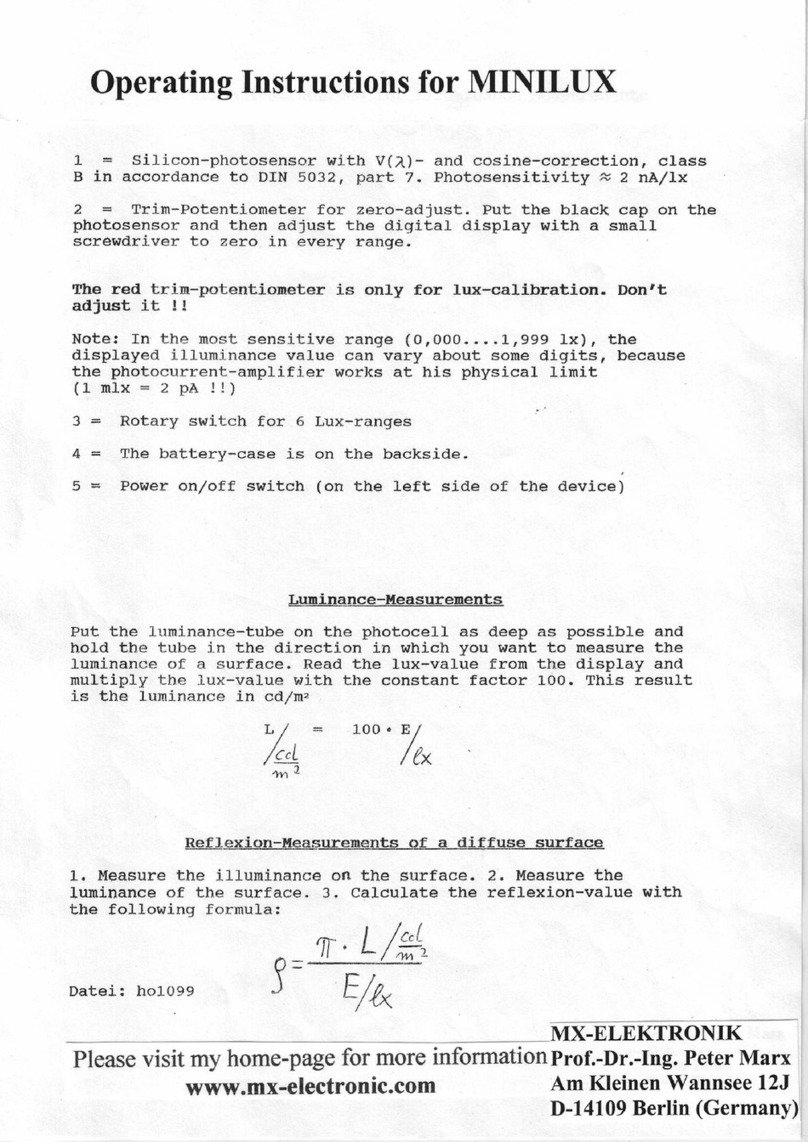
MX-ELEKTRONIK
MX-ELEKTRONIK MINILUX operating instructions
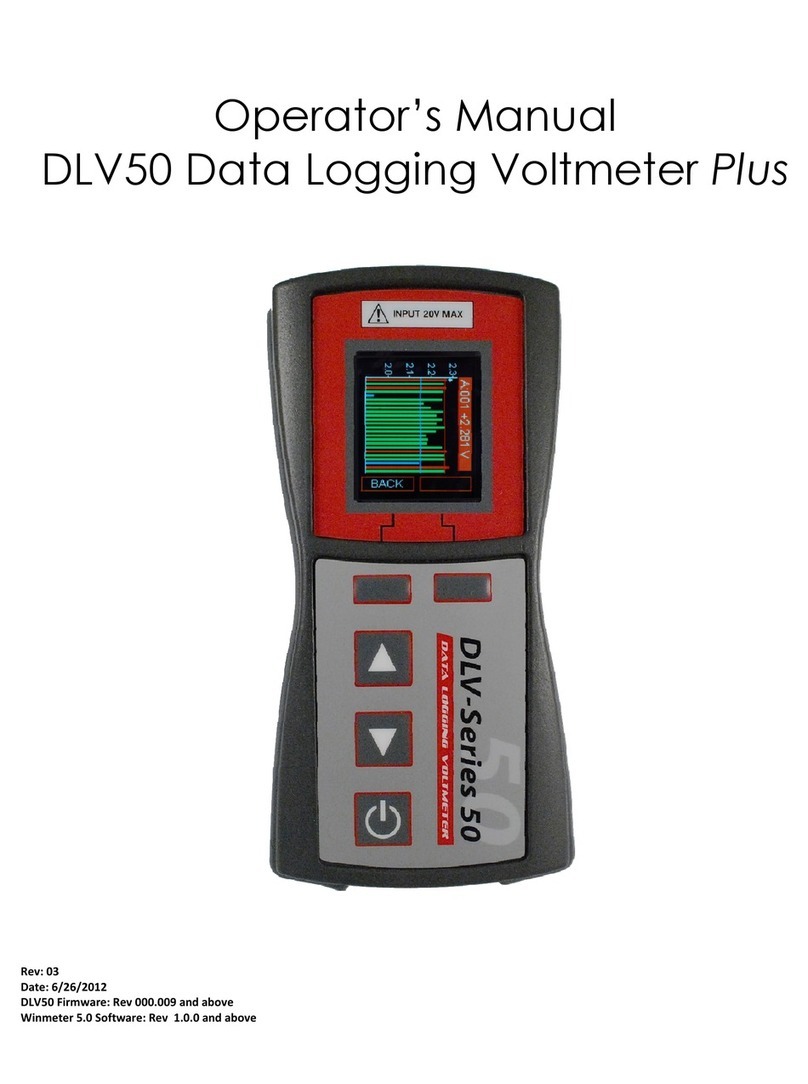
Explorer Technology Group
Explorer Technology Group DLV50 Operator's manual

PCE Health and Fitness
PCE Health and Fitness PM 3 user manual
